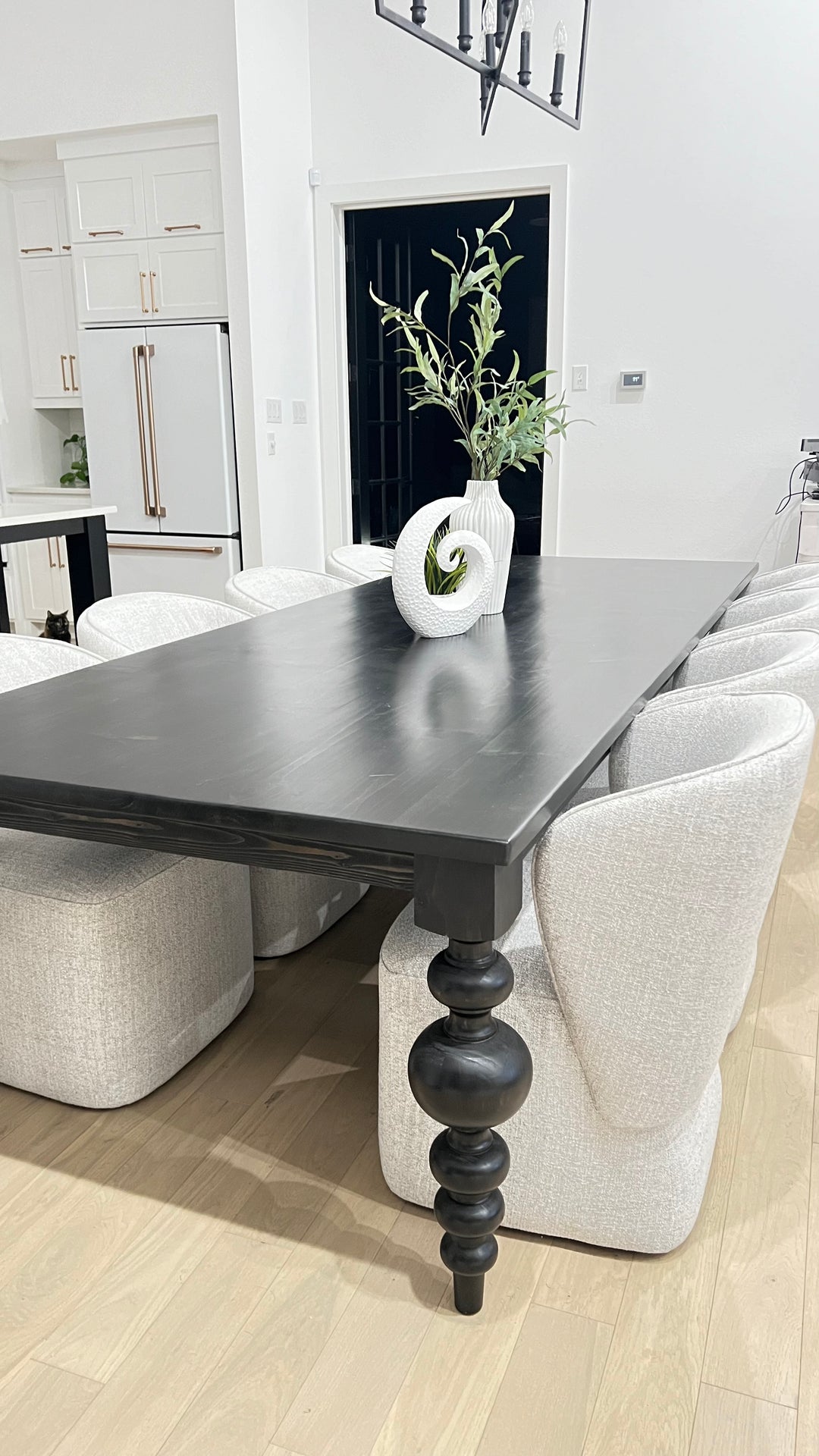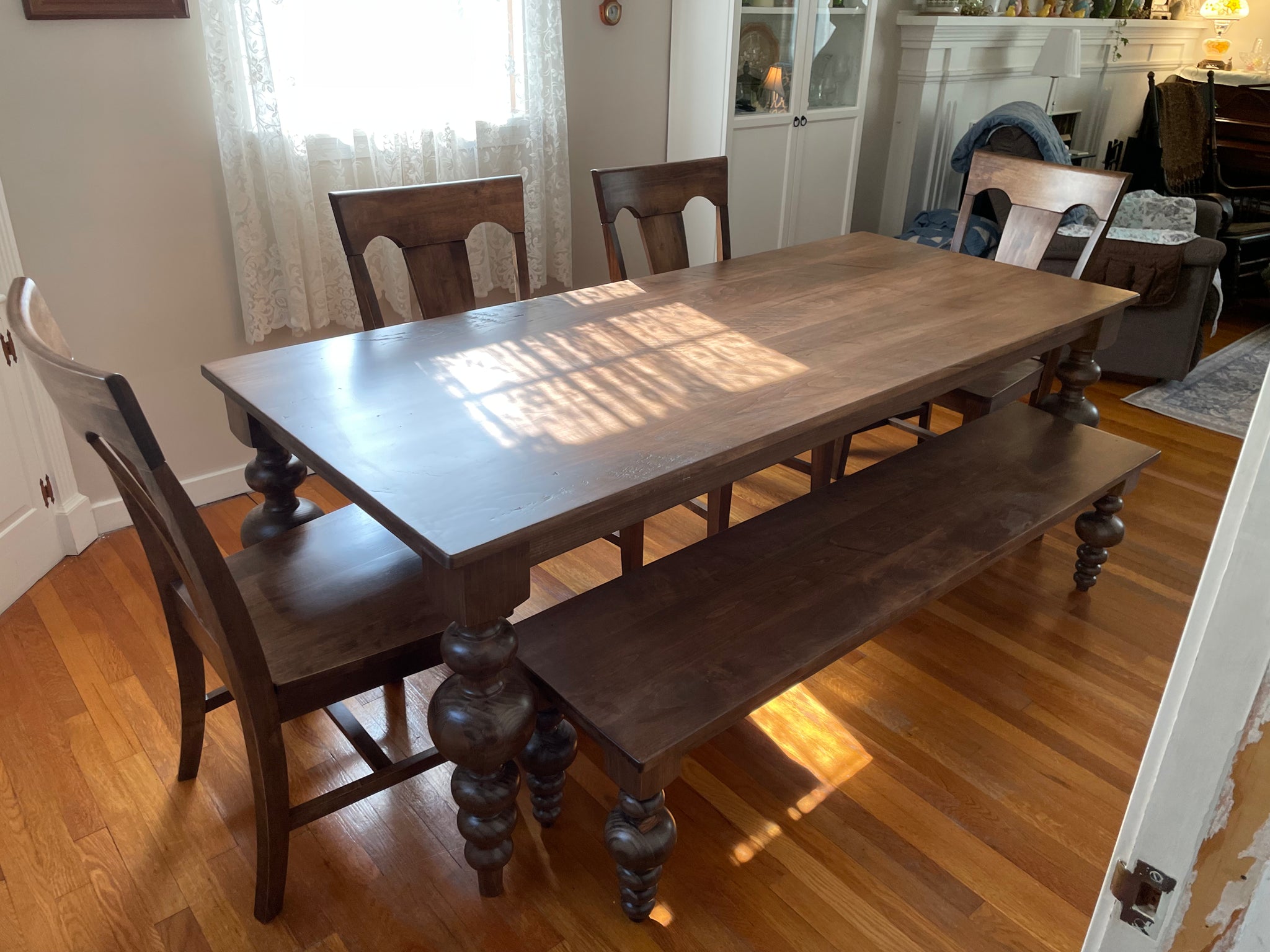Unique Dining Room Table Legs That Will Elevate Your Dining Area
Unique Dining Room Table Legs That Will Elevate Your Dining Area
Blog Article
From Standard to Modern: Locate the Perfect Dining-room Table Legs for Your Style
While classic styles such as cabriole and transformed legs evoke a sense of ageless class, contemporary designs like barrette and geometric choices provide an opportunity for striking visual rate of interest. As you take into consideration these components, the question stays: just how can you perfectly integrate these varied leg styles to create an unified dining experience?
Understanding Table Leg Styles
The range of dining-room table leg designs can dramatically influence both the looks and functionality of the space. Each leg style adds special aesthetic aspects and useful features, accommodating varied design preferences and usage requirements. Understanding these designs is important for picking the best eating table that straightens with your general indoor design vision.
For circumstances, conical legs supply a clean, traditional look that can improve an area's style, while stand bases give stability and take full advantage of legroom, making them excellent for smaller spaces. Barrette legs, a trademark of mid-century modern-day design, introduce a commercial style, permitting for a ventilated, open feeling. Similarly, trestle legs stimulate rustic beauty, providing durable assistance and a sense of timelessness.
Wood legs can bring heat and texture, whereas metal options frequently share a smooth, modern vibe. Ultimately, comprehending table leg styles is crucial for creating a natural dining location that reflects individual style while ensuring functionality and convenience.
Conventional Table Leg Options
When choosing dining space table legs, standard alternatives often embody classic sophistication and workmanship. These designs show a rich heritage and a dedication to quality, making them excellent for those who value timeless aesthetics.
One of the most legendary conventional leg styles is the cabriole leg, identified by its graceful bent form. This layout typically includes decorative carvings and is most commonly located in Queen Anne and Chippendale furnishings. One more popular alternative is the turned leg, which boasts a series of smooth, rounded forms that offer a timeless look while preserving security.
Moreover, the straight leg, while straightforward, provides a sturdy and unadorned framework that can mix seamlessly with a variety of tabletop styles. For those drawn to ornate detailing, claw-and-ball feet legs evoke a sense of splendour and can serve as a magnificent focal factor in any dining room.
Lastly, stand bases, although not purely legs, give a different traditional alternative that enables sufficient legroom and can be wonderfully sculpted. Each of these typical leg styles contributes to the general ambiance of a dining-room, weding feature with aesthetic charm.

Modern Table Leg Layouts
Modern table leg layouts use a varied variety of designs that emphasize tidy lines and ingenious materials. These designs usually prioritize capability while acting as striking focal points within a dining area. Minimal appearances are common, with legs crafted from products such as steel, glass, and engineered timber, which add to a ventilated and contemporary feeling.
One popular design is the hairpin leg, characterized by its slim, tapered structure that offers security without overwhelming the tabletop (dining room table legs). This design is frequently located in mid-century modern furnishings and can easily complement various eating table forms. An additional fad is using geometric forms, where legs may tackle unbalanced or angular kinds, including visual passion and a touch of artistry

Mixing Designs for Unique Areas
Frequently, home owners look for to develop one-of-a-kind dining rooms that reflect their individual design by mixing numerous layout aspects. This strategy enables the incorporation of varied appearances, resulting in a harmonious yet unique setting. As an example, coupling a rustic wood table with smooth, modern-day metal legs can develop a captivating contrast that raises the room's general allure.
In addition, integrating vintage table legs with contemporary tabletops can stimulate a feeling of background while keeping a modern sensibility. Such mixes not only showcase private taste however likewise motivate creativity, enabling property owners to curate an area that really feels both personal and welcoming.
Color plays an essential function in this blending procedure; selecting table legs that enhance or comparison with the existing color plan can boost aesthetic rate of interest. As an example, whitewashed legs can soften the daring of a dark table surface area, producing a well balanced aesthetic.
Tips for Selecting the Right Legs
Selecting the right table legs is important for accomplishing both capability and visual charm in your dining space. Begin by considering click over here the overall style of your area. Conventional setups benefit from legs that include complex makings or turned styles, while modern spaces may ask for sleek, minimalist styles.
Next, examine the height and stability of the legs. dining room table legs. Common eating tables vary between 28 to 30 inches in elevation, so make sure the legs match this dimension for comfort. In addition, robust products, such as hardwood or steel, can enhance security and longevity
Review the leg form too-- options include right, tapered, or pedestal styles. Straight legs offer a classic appearance, while tapered legs can add a touch of style. Pedestal bases give ample legroom and are suitable for smaller areas.
Conclusion
In recap, choosing the excellent eating area table legs requires mindful factor to consider of both modern-day and traditional styles. Standard alternatives such as cabriole and hop over to here transformed legs use timeless elegance, while contemporary layouts like barrette and geometric forms supply a modern touch. By integrating leg design, height, and product with the general decoration, a natural and welcoming atmosphere can be attained. Ultimately, the chosen table legs must reflect the desired aesthetic, boosting the dining experience within the area.
The variety of eating area table leg styles can substantially influence both the aesthetic appeals and functionality of the area. Ultimately, comprehending table leg styles is important for creating a natural dining location that mirrors individual design while ensuring practicality and convenience.One of the most renowned standard leg styles is the cabriole leg, identified by its graceful curved form. Straight legs supply a traditional look, while conical legs can add a touch of style.In recap, picking the excellent dining area table legs requires careful factor to consider of both modern-day and traditional designs.
Report this page